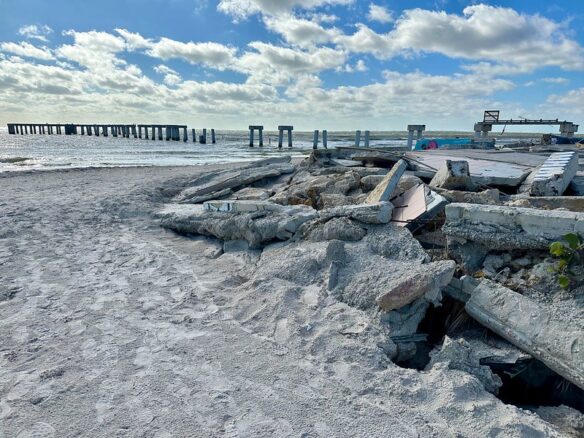Excerpt:
Although coasts form a crucial part of the natural wealth of the planet, their conservation is increasingly jeopardized owing to the growing human footprint. With 50% of the world’s population living within 150 km of a coastline, increasing urbanization and population pressures are threatening these fragile ecosystems (1). Activities such as extreme urbanization, litter generation, and sand mining have imposed substantial stress on these environments. Among these pressures, coastal sand mining—estimated to remove 40 to 50 billion metric tons of sand each year (2)—stands as a pervasive, damaging, and rapidly expanding activity (3, 4).
Sand, with its diverse properties, has garnered substantial commercial attention. Mineral sands are rich in heavy minerals, such as ilmenite and zircon, and are primarily extracted for use in metal production and other industrial applications (3). By contrast, aggregate sands, which are angular and contain a mix of granules of various sizes, are primarily used in construction (4). Recent studies indicate that mineral sands make up ∼5% of the total sand volume used globally, whereas aggregate sands account for ∼40% of the total sand used (2, 4). Although desert sands are plentiful, their smooth texture, a result of aeolian abrasion, renders them ineffective for construction aggregate. Conversely, coastal sands, which are less prevalent, have jagged and angular granules, which makes them the preferred choice for concrete aggregate (3). Another notable type is manufactured sand, which is derived from crushing hard rocks like granite or basalt. Given its consistent quality and adaptability, manufactured sand is a potential sustainable alternative to natural sands. The current rate of coastal sand extraction outstrips the natural replenishment rate of quality sand suitable for standard uses, which makes it unsustainable (2).
Sand plays a pivotal role in three major economic sectors: construction, mineral mining, and beach nourishment (5). Construction is the predominant consumer, accounting for an estimated 85% of all sand mined globally (4, 5). Swift urbanization, particularly in coastal regions, has catalyzed an escalating demand for sand. Mineral mining, which consumes ∼10% of the global sand volume extracted, targets coastal sands for minerals (3). Extracting minerals from coastal sands often presents a more cost-effective alternative compared with inland or deep-sea mining. However, this method results in a substantial volume of waste sands, posing environmental challenges irrespective of geographical location. Beach nourishment (the addition of large quantities of sand to a beach), which uses ∼5% of the sand mined globally, offers a temporary solution to coastal erosion (6). Although it provides a short-term remedy, beach nourishment disrupts natural ecosystems and yields less-resilient, artificial beaches that necessitate costly, recurrent replenishments. Another demand for sand is for use as fill for coastal land expansion (for example, in China, Dubai, and Singapore); however, the volumes used are not publicized…
References:
(1) UN-Habitat, UN-Habitat Annual Report 2009 (United Nations, 2020).
(2) UNEP, UNEP Yearbook: Emerging Issues in Our Global Environment (UNEP, 2002).
(3) O. H. Pilkey et al., Vanishing Sands: Losing Beaches to Mining (Duke Univ. Press, 2022).
(4) UNEP, “The Search for Sustainable Sand Extraction is Beginning” (2022); https://www.unenvironment.org/news-and-stories/story/search-sustainable-sand-extraction-beginning.
(5) N. Rangel-Buitrago et al., Ocean Coast. Manage. 235, 106492 (2023).
(6) N. Rangel-Buitrago, W. J. Neal, in Encyclopedia of Coastal Science, C. W. Finkl, C. Makowski, Eds. (Springer, 2019).









